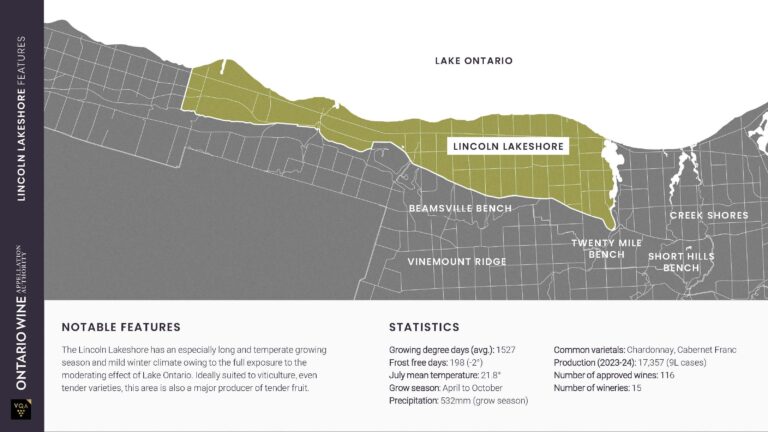
Lincoln Lakeshore is a sub-appellation of the Niagara Peninsula wine region. It runs along the shore of Lake Ontario and is backed by the foot of the escarpment bend on its southern boundary. This is the Lake Iroquois Plain, which gently slopes from the base of the escarpment to Lake Ontario, providing drainage for ground water and keeping moisture in balance.
The growing season here is long and temperate and ideally suited to viticulture. These vineyards enjoy uninterrupted sunshine and maximum sun exposure during the growing season. They also benefit from a localized circulation system (cool air coming off the lake and warm air from the land), which moderates the rate at which the area cools off at night and warms up during the day.
This sub-appellation is part of the extensive Lake Iroquois Plain – the ancient lake bed of glacial Lake Iroquois – and there is marked variability in soil types and depths. Approximately 55% of the region is covered by light sandy soils, with good drainage, that warm early and easily in the spring. Also scattered throughout the region are heavier soils of red clay loam and Trafalgar grey/brown clay, which limit and balance the vigour of the vines, naturally driving them to low yields.
Savoie accounts for less than 0.5% of French wine produced, with only 2,000 hectares under vine. As with many Alpine appellations, wine production developed in relative isolation. Unique, indigenous varieties abound, namely Jacquère (50% of plantings), Altesse, Chasselas and Mondeuse, alongside more familiar grapes like Roussanne and Pinot Noir. Vineyards are widely dispersed amongst the foothills of the Alps and the region’s 14 named Crus are scattered throughout the territory. These isolated sub-regions have varied topography and soils, though they all share a Continental climate that’s greatly influenced by elevation and local lakes and rivers. Though definitely a ‘cool climate’, south facing vineyards and the moderating effects from the various bodies of water ensure grapes here ripen fully each year. Historically, Savoie vintners often chaptalized their wines (i.e., added sugar to achieve higher degrees of alcohol), but with global temperatures rising and consumers looking for lower alcohol wines, the practice is used less and less.
One of the more important Cru (subregions) of the Vin de Savoie appellation is Chignin. Chignin wines may only be produced in the village and commune of Chignin, which lies on the southwestern side of the Bauges mountains in the Combe de Savoie – a deep valley that runs for 40km between the winter resort town of Albertville in the northeast and Montmélian in the southwest


